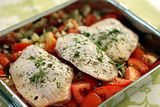
Lemon Sables
I made these for the weekly co-worker treat. The recipe is from Cooks' Illustrated and has an interesting twist to it - hard boiled egg yolk is used in place of uncooked egg yolk. The reason given is that this will give a more sandy, crunchy texture to the sables. Well, they were delicious anyway - I'm not sure if the egg yolk thing made that much of a difference. I may well use this method again, but boil two large egg yolks, weigh the first, then keep some of the other one to make up any loss of yolk when putting the first one through the strainer.
Recipe:
Make sure the cookie dough is well chilled and firm so that it can be uniformly sliced. After the dough has been wrapped in parchment, it can be double-wrapped in plastic and frozen for up to 2 weeks.
Ingredients
1 large egg
10 tablespoons (1 1/4 sticks) unsalted butter , softened
1/3 cup plus 1 tablespoon granulated sugar (2 3/4 ounces)
1/4 teaspoon table salt
1 teaspoon vanilla extract
4 teaspoons grated lemon zest (I used 3 teasp. as I did not want it too lemony.)
1 1/2 cups unbleached all-purpose flour (7 1/2 ounces)
Confectioners' sugar
Instructions
1. Place egg in small saucepan, cover with 1 inch water, and bring to boil over high heat. Remove pan from heat, cover, and let sit 10 minutes. Meanwhile, fill small bowl with ice water. Using slotted spoon, transfer egg to ice water and let stand 5 minutes. Crack egg and peel shell. Separate yolk from white; discard white. Press yolk through fine-mesh strainer into small bowl.
2. In bowl of stand mixer fitted with paddle attachment, beat butter, granulated sugar, salt, and cooked egg yolk on medium speed until light and fluffy, about 4 minutes, scraping down sides of bowl and beater with rubber spatula as needed. Turn mixer to low, add vanilla and lemon zest, and mix until incorporated. Stop mixer; add flour and mix on low speed until just combined, about 30 seconds. Using rubber spatula, press dough into cohesive mass.
3. Divide dough in half; roll each piece into log about 6 inches long and 1 3/4 inches in diameter. Wrap each log in 12-inch square of parchment paper and twist ends to seal and firmly compact dough into tight cylinder (see illustrations below). Chill until firm, about 1 hour.
4. Adjust oven racks to upper-middle and lower-middle positions and heat oven to 350 degrees. Line 2 rimmed baking sheets with parchment paper. Using chef’s knife, slice dough into one-quarter-inch-thick rounds, rotating dough so that it won’t become misshapen from weight of knife. Place cookies 1 inch apart on baking sheets.
5. Bake until centers of cookies are pale golden brown with edges slightly darker than centers, about 15 minutes (mine took 20 mins.), rotating baking sheets front to back and top to bottom halfway through baking. Cool cookies on baking sheet 5 minutes; using thin metal spatula, transfer cookies to wire rack and cool to room temperature. Once cookies have cooled, dust with confectioners' sugar. Store cooled cookies between sheets of parchment paper in airtight container for up to 1 week.
After tasting and comparing - These cookies are definitly more crunchy and sandy than those with an uncooked yoke as an ingredient. It seems the more uncooked yoke (two in my next trial) the more the cookies become like delicious butter biscuits but very, very light. Both kinds are good.
























